Natural Standard Herb and Supplement Handbook, The Clinical Bottom Line
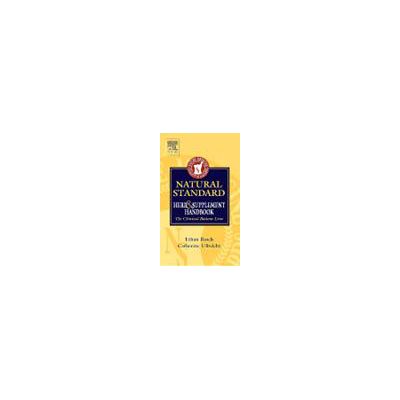
Preț: 168,00 lei
Disponibilitate: în stoc la furnizor
Autor: by Natural Standard
ISBN: 978-0-323-02993-3
Editura: Elsevier
Anul publicarii: 2005
Pagini: 1008
Format: Handbook
DESCRIERE
This must-have handbook gives the clinical facts on 91 key herbs and supplements. The format is easily accessible, so the reader can obtain the “bottom line” facts on what to prescribe and what to avoid.This portable reference provides the most essential information on safety, efficacy, interactions, and more. It contains only key facts and key references.
This handbook is a companion to, and is based on the information contained in, the monographs for the Natural Standard Herb and Supplement Reference: Evidence-Based Clinical Reviews.
Reviews
The handbook is a comprehensive resource, which summarises the evidence from systematic reviews and clinical trial of herbs and supplements. Focus on Alternative and Complementary Therapies
Back to top
Features
# 91 up-to-date monographs provide the most current information on herbs and natural supplements.
# The most rigorously researched handbook available, its evidence-based approach provides credible information on the efficacy and safety of each therapy, so you can make decisions with confidence.
# An editorial board of leading experts from a variety of disciplines includes insights from physicians, pharmacists, administrators, naturopaths, homeopaths, acupuncturists, chiropractors, and researchers.
# Quick-access format provides key information for each herb or supplement within two pages.
# Dosage information for adults and children makes this resource clinically relevant in any practice setting.
# Organized interaction tables help you identify the clinical significance of potential drug/herb/supplement/food/lab interactions.
# 160 conditions tables, organized by specific health conditions and their related terms, let you turn to the condition you're treating rather than searching through the indications of individual herbs and supplements.
Back to top
Contents
Introduction
* Natural Standard
* Monograph Methodology
* Natural Standard Grading System
* CAM Use in the United States
* CAM Research
* Prevalence
* Safety Concerns
* Standardization
* Patient-Clinician Communication
Editorial Board/Contributor List
* Senior Editors
* Authors
* Translators
* Research Team
* Technical Team
Acknowledgements
Monographs
1. Acidophilus (Lactobacillus) 2. Alfalfa 3. Aloe 4. Antineoplastons 5. Arginine 6. Astragalus 7. Barley 8. Belladonna 9. Betelnut 10. Bilberry 11. Bitter Almond 12. Black Cohosh 13. Black Tea 14. Bladderwrack/Seaweed/Kelp 15. Blessed Thistle 16. Boron 17. Bromelain 18. Burdock 19. Calendula 20. Chamomile 21. Chaparral 22. Chondroitin 23. Clay 24. Clove 25. CoenzymeQ10 26. Cranberry 27. Creatine 28. Dandelion 29. Danshen 30. Devil’s Claw 31. DHEA 32. Dong Quai 33. Echinacea 34. Elderberry and Elder Flower 35. Ephedra 36. Essiac 37. Eucalyptus 38. Evening Primrose Oil 39. Fenugreek 40. Feverfew 41. Fish Oil/Omega-3 Fatty Acids 42. Flaxseed 43. Garlic 44. Ginger 45. Ginkgo 46. Ginseng 47. Glucosamine 48. Goldenseal 49. Gotu Kola 50. Green Tea 51. Guggul 52. Gymnema 53. Hawthorn 54. Hops 55. Horse Chestnut 56. Horsetail 57. Hoxsey 58. Kava 59. Lavender 60. Licorice 61. Lycopene 62. Maitake 63. Marshmallow 64. Melatonin 65. Milk Thistle 66. Niacin 67. Oleander 68. Passion Flower 69. PC-SPES 70. Pennyroyal 71. Peppermint 72. Polypodium 73. Propolis 74. Psyllium 75. Pycnogenol 76. Pygeum 77. Red Clover 78. Red Yeast 79. Saw Palmetto 80. Shark Cartilage 81. Slippery Elm 82. Soy 83. Spirulina 84. St. John’s Wort 85. Sweet Almond 86. Tea Tree Oil 87. Turmeric (curcumin) 88. Valerian 89. White Horehound 90. Wild Yam 91. Yohimbe Bark Extract
Appendices
Interactions Tables
* TABLE 1: Herbs with Potential Hypoglycemic or Hyperglycemic Properties
* TABLE 2: Herbs and Supplements with Potential Hepatotoxic Effects
* TABLE 3: Herbs and Supplements with Possible Hypotensive or Hypertensive Properties
* TABLE 4: Herbs with Potential Progestational or Estrogenic Activity
* TABLE 5: Herbs with Known or Potential Diuretic Properties
* TABLE 6: Herbs/Supplements with Possible Sedating Properties
* TABLE 7: Herbs with Potential Cardiac Glycoside Properties
* TABLE 8: Cytochrome P450: Selected Substrates, Inhibitors, & Inducers
* TABLE 9: Selective Serotonin Reuptake Inhibitors (SSRI)
* TABLE 10: Monoamine Oxidase Inhibitors (MAOIs)
* TABLE 11: Tyramine/Tryptophan Containing Foods (risk of hypertensive crisis with MAOIs)
* TABLE 11: Herbs with Laxative/Stimulant Laxative Properties
This handbook is a companion to, and is based on the information contained in, the monographs for the Natural Standard Herb and Supplement Reference: Evidence-Based Clinical Reviews.
Reviews
The handbook is a comprehensive resource, which summarises the evidence from systematic reviews and clinical trial of herbs and supplements. Focus on Alternative and Complementary Therapies
Back to top
Features
# 91 up-to-date monographs provide the most current information on herbs and natural supplements.
# The most rigorously researched handbook available, its evidence-based approach provides credible information on the efficacy and safety of each therapy, so you can make decisions with confidence.
# An editorial board of leading experts from a variety of disciplines includes insights from physicians, pharmacists, administrators, naturopaths, homeopaths, acupuncturists, chiropractors, and researchers.
# Quick-access format provides key information for each herb or supplement within two pages.
# Dosage information for adults and children makes this resource clinically relevant in any practice setting.
# Organized interaction tables help you identify the clinical significance of potential drug/herb/supplement/food/lab interactions.
# 160 conditions tables, organized by specific health conditions and their related terms, let you turn to the condition you're treating rather than searching through the indications of individual herbs and supplements.
Back to top
Contents
Introduction
* Natural Standard
* Monograph Methodology
* Natural Standard Grading System
* CAM Use in the United States
* CAM Research
* Prevalence
* Safety Concerns
* Standardization
* Patient-Clinician Communication
Editorial Board/Contributor List
* Senior Editors
* Authors
* Translators
* Research Team
* Technical Team
Acknowledgements
Monographs
1. Acidophilus (Lactobacillus) 2. Alfalfa 3. Aloe 4. Antineoplastons 5. Arginine 6. Astragalus 7. Barley 8. Belladonna 9. Betelnut 10. Bilberry 11. Bitter Almond 12. Black Cohosh 13. Black Tea 14. Bladderwrack/Seaweed/Kelp 15. Blessed Thistle 16. Boron 17. Bromelain 18. Burdock 19. Calendula 20. Chamomile 21. Chaparral 22. Chondroitin 23. Clay 24. Clove 25. CoenzymeQ10 26. Cranberry 27. Creatine 28. Dandelion 29. Danshen 30. Devil’s Claw 31. DHEA 32. Dong Quai 33. Echinacea 34. Elderberry and Elder Flower 35. Ephedra 36. Essiac 37. Eucalyptus 38. Evening Primrose Oil 39. Fenugreek 40. Feverfew 41. Fish Oil/Omega-3 Fatty Acids 42. Flaxseed 43. Garlic 44. Ginger 45. Ginkgo 46. Ginseng 47. Glucosamine 48. Goldenseal 49. Gotu Kola 50. Green Tea 51. Guggul 52. Gymnema 53. Hawthorn 54. Hops 55. Horse Chestnut 56. Horsetail 57. Hoxsey 58. Kava 59. Lavender 60. Licorice 61. Lycopene 62. Maitake 63. Marshmallow 64. Melatonin 65. Milk Thistle 66. Niacin 67. Oleander 68. Passion Flower 69. PC-SPES 70. Pennyroyal 71. Peppermint 72. Polypodium 73. Propolis 74. Psyllium 75. Pycnogenol 76. Pygeum 77. Red Clover 78. Red Yeast 79. Saw Palmetto 80. Shark Cartilage 81. Slippery Elm 82. Soy 83. Spirulina 84. St. John’s Wort 85. Sweet Almond 86. Tea Tree Oil 87. Turmeric (curcumin) 88. Valerian 89. White Horehound 90. Wild Yam 91. Yohimbe Bark Extract
Appendices
Interactions Tables
* TABLE 1: Herbs with Potential Hypoglycemic or Hyperglycemic Properties
* TABLE 2: Herbs and Supplements with Potential Hepatotoxic Effects
* TABLE 3: Herbs and Supplements with Possible Hypotensive or Hypertensive Properties
* TABLE 4: Herbs with Potential Progestational or Estrogenic Activity
* TABLE 5: Herbs with Known or Potential Diuretic Properties
* TABLE 6: Herbs/Supplements with Possible Sedating Properties
* TABLE 7: Herbs with Potential Cardiac Glycoside Properties
* TABLE 8: Cytochrome P450: Selected Substrates, Inhibitors, & Inducers
* TABLE 9: Selective Serotonin Reuptake Inhibitors (SSRI)
* TABLE 10: Monoamine Oxidase Inhibitors (MAOIs)
* TABLE 11: Tyramine/Tryptophan Containing Foods (risk of hypertensive crisis with MAOIs)
* TABLE 11: Herbs with Laxative/Stimulant Laxative Properties
Categorii de carte
-Comandă specială
-Edituri
-Promo
-Publicaţii Callisto
-Cărţi noi
-- 585,90 leiPRP: 651,00 lei
- 630,00 lei
- 1102,50 lei
Promoţii
-- 585,90 leiPRP: 651,00 lei
- 652,05 leiPRP: 724,50 lei
- 415,80 leiPRP: 472,50 lei


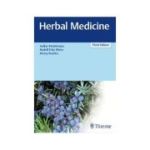
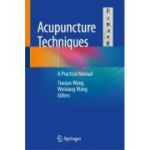
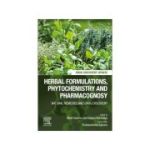
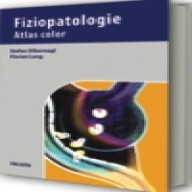


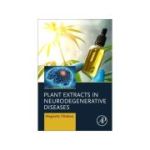
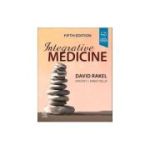

REVIEW-URI